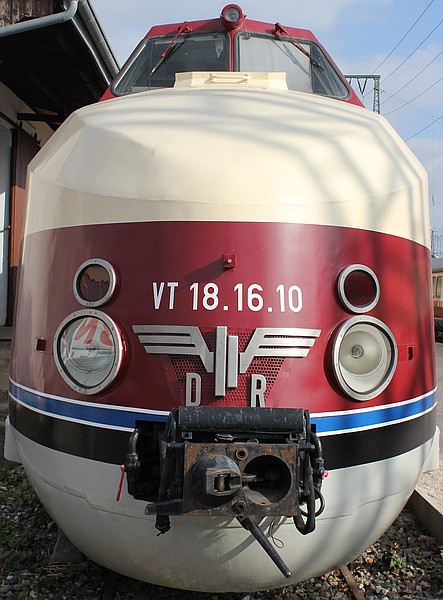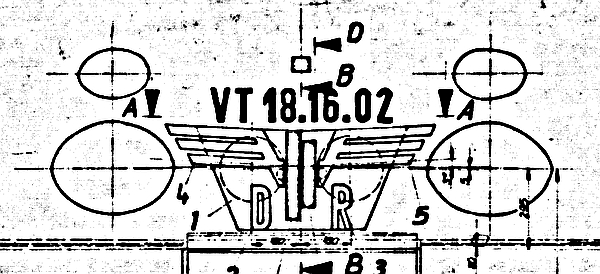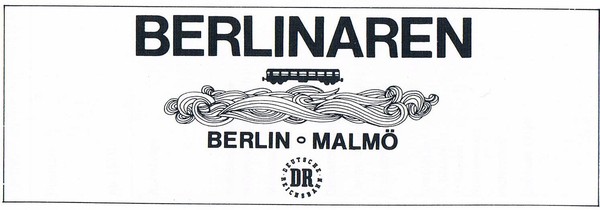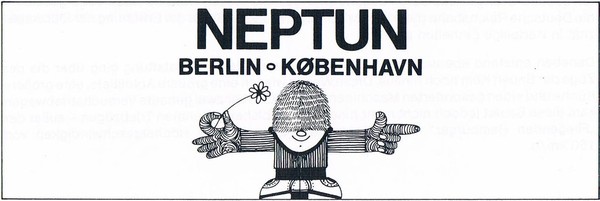There are two famous sayings, one is Names are only hollow words, whereas the other one Nomen est Omen has a totally different meaning.
So there exist many different terms for the SVT. We would like to explain some of them and we want to start with the official terms for the railcar built by the VEB Waggonbau Görlitz.
- The terms SVT Görlitz or Bauart Görlitz go back to the time before The Second World War. There were self-propelled railway vehicles such as the SVT Hamburg, Berlin and Collogne. The term SVT Görlitz refers to the VEB Waggonbau Görlitz where the train was produced. But the old railway cars from the pre-war-time were not named after their place of manufacture. On the contrary, for example the SVT Hamburg was produced in Görlitz by the Waggon- und Maschinenbau AG (WUMAG).
- The official term SVT cannot be found in old historical classifications but compared to other model series SVT certainly stands for Schnellverkehrstriebzug (fast traffic railcar) driven by an internal combustion engine.
https://de.wikipedia.org/wiki/Baureihenschema_der_Deutschen_Reichsbahn - In 1963 when the train was put into operation for the first time it was officially called VT 18.16. VT stands for railcar with combustion engine (in German Triebzug mit Verbrennungsmotor). The number 18 represents the engine power in 100 hp. So the railcar had a power of 1,800 hp, that means each power head had an engine of 900 hp. Later the power increased to 2 x 1000 hp. However, the term VT 18.16 was not changed. The number 16 denotes the maximum speed the train could reach. So the top speed was 160 kilometres per hour.


- Because of the switch to computerized notation from 1 July 1970 onwards the introduction of six-digit numbers and verification digits became necessary. As a result all these railcars were named Baureihe 175 (model series 175) and later after the Deutsche Bahn AG was founded they became Baureihe 675 (model series 675). More information you can find in the book Der Schnelltriebwagen der Bauart „Görlitz“ written by Wolgang Dath (chart p. 231).
Now some facts about other absolutely pleasant-sounding terms:
- Berlinaren: Berlin – Malmö (with the sea crossing Sassnitz–Trelleborg)

- Karlex: Berlin – Karlovy Vary (Carlsbad)

- Karola: Leipzig – Karlovy Vary (Carlsbad)
- Neptun: Berlin – Kopenhagen (with the sea crossing Warnemünde–Gedser)

- Vindobona: Berlin – Prague – Vienna

- Berlin – Bautzen, the so-called „Sorbenexpress“
First, no one of these railcars got a name as it is typical for the Intercity Express today. All these names mentioned above refer to railway lines regardless of the running gear. So, for example, before the SVT Görlitz was put into service old vehicles had been used on the tracks. Later after the SVT Görlitz was taken out of operation locomotives were used instead. Depending on schedule terms during the year trains of different German railway administrations were used. Nevertheless, all these different names have a close connection to the SVT and some of them are even better known than the terms officially used for the train.
Through our project A Train for Central Germany we want to link again the historical train with all those old historical terms once used for the train. So for us names are definitely not hollow words but ambition, scheme and purpose.




